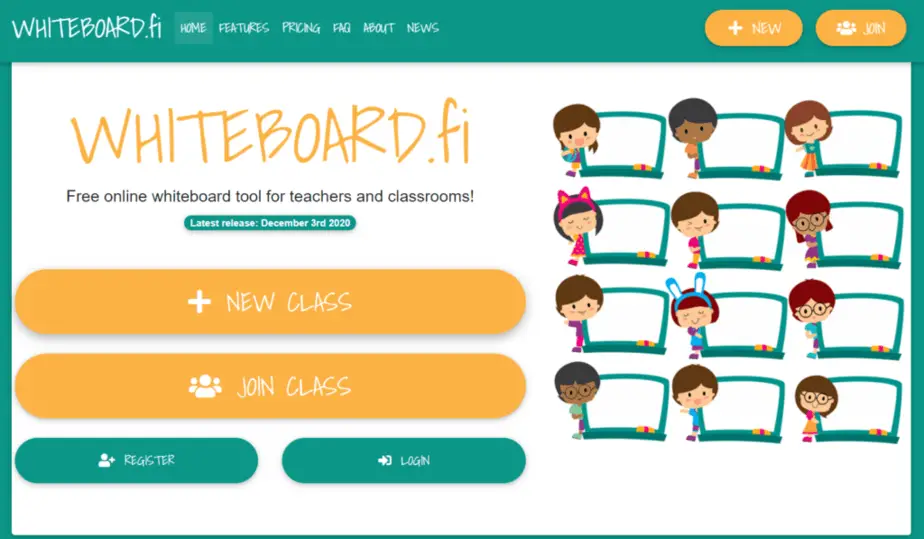Like many ESL teachers when covid-19 hit, almost overnight, I had to convert my regular classroom based ESL lessons to become a 100% online experience. In the process, I had to keep parents happy that they were getting value for money and students continually engaged in lessons in a fun way.
To teach ESL online set-up your teaching environment to include a suitable background and have any physical resources required to hand. Connect with students via your preferred platform, e.g. Zoom. Utilise suitable teaching strategies and learning platforms to achieve your lesson aims. Reflect and improve.
Teaching ESL online effectively is not a straightforward task as the combination of the language barrier and technology can lead to some very frustrating experiences. However, there are things that can be done to make sure everyone has a good experience learning and teaching English online.
This page is dedicated to all those ESL/English teachers out there looking to improve their online performance. You are not alone!
How To Teach ESL/English Online Effectively
That is essentially my teaching process; let’s go through it in detail.
STEP 1: Set-up your online teaching environment.
By this I mean sort out what the students are going to see behind you. In most cases this will be the room you are sitting in.
I would urge you to have a whiteboard behind you. This would ideally be fixed to the wall but one that stands alone is fine also. Some teachers prefer just to have a small whiteboard to hand that they can hold up when they use it. Personally, I find the fixed whiteboard to work best.
Around the board, just as you would in a real classroom place keywords, sentence starters, grammar rules and so on to both help support students but also to remind them that they are in a classroom environment with other students about.
Also, have to hand any physical resources you need for the class, obvious things like whiteboard pens and erasers, as well as any realia you need for the lesson.
It always pays to have some ‘realia’ to use i.e. real world objects you can show to the students, the reason being that it creates interest but also because it does not require any additional technology to show them to students.
Avoiding the use of unnecessary technology is one of the keys to teaching ESL online effectively. Sticking to the basic tools you need and only introducing new tools/learning platforms when you absolutely have to.
Otherwise, you risk having the confusion of having a group of ESL students all trying to figure out and register with a new platform/website in the middle of one of your lessons which can disrupt the lesson significantly.
By the way, you could also use the functions on Zoom to put in a picture of anything you like behind you as a background too. This can work well, especially if it is relevant to what you are teaching.
For example, when I taught about jungle animals to some younger students I changed my background to look like I was inside a jungle which the kids really loved.

STEP 2: Connect with your students.
Personally, I use a combination of Zoom and Google Hangouts/Classroom for teaching. Zoom is preferable if you have larger classes as it lets you see up to 49 faces at the same time whereas Hangouts simply shows the 10 most active users at the bottom of the screen at any one time.
This is a big disadvantage if you have younger learners who are prone to getting distracted, or teenagers who might want to dodge a bit of work.
Presumably, you will have prearranged your teaching schedule with your students so they should know what time to log-on. I suggest either setting up a Google Hangouts group which you can save and just call every time you want to teach that group, or, use the same code for each lesson on Zoom.
You might want to enable the waiting room feature so you aren’t disturbed by a student logging in at the wrong time or before you are ready for class to begin which is a neat little feature.
And do make sure your microphone is not turned on until you are ready. There is nothing worse than students over hearing private conversations!
STEP 3: Utilize suitable online teaching strategies.
In truth, there is a little research into how to teach most effectively online at the moment. However, what I have found to work best is to follow a clear lesson structure, generally the presentation, practice, production model.
Within that, though, I use a combination of synchronous activities which means direct teacher led activities and also asynchronous activities where I set learners tasks via different platforms which they can then work on independently and receive live feedback on. More on this further down the page.

STEP 4: Check learning
Finishing with a quiz is useful and for this I often use Kahoot as students of all ages really seem to enjoy it and because a lot of our teachers use this website so all students know how to navigate it really well.
And of course, I make sure lessons include plenty of visual images and short video clips to aid understanding but I always concept check with students that they understand. Using a random wheel name selector to keep them all on their toes and listening aids engagement too.
With smaller groups, or even one to one lessons, although it might feel as though you should do the entire lesson teacher led.
Whilst you might think you are giving good value for money, you may actually be reducing the time when the student(s) is/are actually being productive with the language and you are probably wearing yourself out at the same time!
Step 5: Reflect And Improve
The final stage is to reflect on your lesson. Actually I hate this term ‘reflect’. And I loathed filling in a reflection journal during my PGCE days. Honestly, I don’t know any teacher who does not notice when and why something goes well or not in the lesson.
I think it is just an automatic thing for most teachers, especially when you are new to online teaching. But it does pay to have a little think about what you might do better next time and perhaps write it down in your planner if you use one.
Finally, talk to any colleagues that teach the same students or similar classes. Share what works well and what does not go well and your effectiveness at online teaching will improve.

Online ESL Teaching Strategies and Methods
There is not a lot of research available regarding online ESL teaching methods and strategies. The three main approaches are synchronous, asynchronous and a blended approach. The ‘live’ teaching synchronous method is by far the most popular in online ESL classrooms and tends to be most effective.
Let’s take a look at these in more detail now…
The Synchronous Teaching Strategy
The synchronous teaching strategy is essentially ‘live’ teaching. Presenting a new topic in the same way you might do in the classroom. Naturally, then the teacher might move onto guiding students through a series of exercises and directly engaging students in discussions and providing live feedback on progress.
Break out rooms in Zoom maybe used for pair work during synchronous teaching but the main feature of this strategy is that teaching, help and guidance is available directly from the teacher.
The Asynchronous Teaching Strategy
The asynchronous teaching strategy is essentially providing content often in the form of video that students can access in their own time and to their own schedule. This tends to suit older students better and is certainly easier with motivated higher level students.
ESL students might struggle with this method if the material is not precisely at the required level for them as who are they going to ask for help if a teacher is not available’ live’ to address their needs.
Online Blended Learning For ESL
The third method is the online blended learning approach. This involves the teacher guiding students through premade content, perhaps directing students to the right videos to watch, making sure they watch them, answering student’s questions as the video goes along and then setting up some sort of live activity afterwards, such as a debate, or presentation task.
I use Khan Academy a lot with my students to teach IELTS and SAT English directing them to watch certain videos and pointing them towards certain exercises and quizzes to take and then following up with personal feedback from myself.
Which strategy should you choose? In my humble opinion the younger and the lower the level of ESL student you have the more likely it is that you will have no choice but to use the synchronous approach. They need, want and expect direct guidance from the teacher otherwise what are they paying for?
A classic case of selecting the wrong strategy occurred at my school where a low level ESL student was allowed to join the school before we went into lockdown.
Previously, in school he had just about been coping because of help from other students and the teacher. However, when all his lessons moved online and he started being taught via a blended approach he could not cope at all. It would take him a full lesson just to try and work out the teachers instructions that had been left for him.
The student initially got in trouble for being lazy but in reality he just could not cope with blended learning. So, the ESL department stepped in and we withdrew him from more lessons that involved blended or asynchronous learning and we conducted intensive face to face synchronous lessons with him.
In my opinion, it should therefore be a fairly straightforward choice in providing face to face, synchronous lessons for ESL classes.
Activities, Ideas And Tools For Teaching ESL Online
So, we have got our 5 step process sorted and our strategy selected but what are we actually going to do in our online classes to get students engaged, learning and having fun? Here are a few of my ideas to have a go at:
For vocabulary lessons/starters/plenaries I like to use: Quizlet.com, or Quizziz.com
I would suggest that you don’t go to those sites with a fixed idea of what you want to teach in mind. Instead, go there and see what premade resources you can make use of. Of course, it is nice to make your own lists and select your own images but if someone has made something similar then save yourself some time and use it.
For all in one ESL solution you could try: Off2class.com
I subscribed to this site for a while and found it very helpful in delivering solid content online.
The problem with this site and other similar sites is that after a few lessons students start to know the types of activities they are going to be doing during the lesson. This takes the mystery and fun out of lessons for me.
I think it is far better to use all in one platforms but to add your own twists to them as well. Perhaps, select your own videos, create your own related role plays or whatever, just something to personalize the lessons a bit more otherwise lessons can get stale very quickly.
For quizzes for plenaries, starters and assessment purposes, I use: Kahoot.com, brainscape.com, or socrative.com
All the above platforms are credible and once students have an account setup then they are good to go.
A few words of advice though, be wary of how long your quizzes go on for. Anything over the ten minute mark for me starts to lose its impact and students’ interest.
Short and sweet is often better as this means the next time you announce that you are going to do a class quiz it isn’t greeted with student groans!
Also, you might want to consider allowing multiple attempts to quiz questions. It is quite disheartening and disengaging if a student gets an answer wrong.
I mean, they usually immediately find out that they are wrong and then they have to wait for the next question or for a teacher explanation later.
Wouldn’t it be far better if after getting a question wrong students then had a chance to have another go. If it is multiple choice then they can eventually work out the correct answer and then at least there is some learning going on.
Don’t forget too that quizzes make fun homework assignments also. They can give you really useful information on how students are actually progressing without the help of their friends around them.
Offline ESL sources for online use: teach-this.com, twinkl.com
As I have been teaching a while, I can remember which activities from which websites I use for different topics/grammar points. When we switched to online learning I still wanted to use the same material.
What I did was to open the pdf files from the various websites and snip out the sections that I wanted to use using a snipping tool and then place them on a google doc in the order I wanted to use them. I would also usually put one line of instruction as well.
I would then make duplicate copies of the document and share them individually with each student. I found this the best way of guiding them through exercises and keeping a record of what they were doing.
With a bit of forethought you can also still do all the barrier game type activities by snipping out student A and student B sections and pasting them on pairs of students docs. Then you can ask students to do the pairwork on a breakout room.
It worked well for me and I have to confess I did my fair share of scanning of ESL course books to create pdfs and then snipping parts of them to add to a google doc. Whilst it tended to take a while to put these google docs together they would often last me for multiple lessons.

More Online ESL Tools For Spicing Up Your Lessons
An Online Whiteboard that allows you to push a copy of your whiteboard to students for individual editing, and for you to see them working on their whiteboards in real time.
Nearpod.com is designed specifically for making online learning more interactive. The website has prebuilt lessons in their “library”. You can create interactive presentations that can contain Quiz’s, Polls, Videos, Collaborate Boards, etc..
You can import existing Google Slides, PDFs or PowerPoints into the app and it will create a Nearpod presentation. After that, you can select from interactive activities and formative assessments to add to the presentation. The presentations will be beamed to each students’ device. Pretty cool but there is a learning curve.
Skribble.io allows students to take turns drawing keywords and compete against each other to guess what the other students are drawing, king of like an online pictionary. You need to create a private room and a custom list of keywords (make sure you tick the box to only use your custom words).
Invite pupils to a private room, randomly selected to draw one of the keywords from your list, the other pupils have to guess and type the keyword from what they draw. Points can be given out for the speed in which they guess the word.
Puppet Pals Create your own shows with animation and audio in real time. Great fun for creating story writing once students have got the hang of it but only available on IOS at present. You pick out your actors and backdrops from a library, drag them on to the stage, and tap record. Move the characters around on screen whilst recording and the character movements and audio is recorded in real time.
Storyboardthat.com is great for creating animated storyboards online. Again, this one is great for creative writing tasks, or just story narrating for speaking practice. It is pretty intuitive to get going so students should not have to much problem getting used to it.
Wheelofnames.com These are great for keeping students on their toes as they do not know who is going to be asked the questions and however basic it is it does provide an element of fun to proceedings.
Info.flipgrid.com allows you to set discussion questions that pupils can answer. Pupils can see each other’s answers to the questions (Private topic means only the teacher can view them). They can answer their questions by uploading videos, and can see each other’s videos. It is really easy for pupils to use, they can upload a video straight to the site as a response. There is also an immersive reader built in which reads out written text to students.
Peardeck.com is another online quiz option should you need it or fancy a change. The images and templates make creating your own quiz kind of fun and engaging for students. I guess this is their main selling point.
Edpuzzle.com is great for listening practise for ESL students. It allows you to add questions to YouTube videos. The video pauses at times that you choose in the video, and pupils have to answer a question before it will continue playing.
It allows you to check if students are watching your videos, how many times they’re watching each section, and if they’re understanding the content. If you don’t want to add questions, and just make sure they have watched a video you can do that too.

There are lots more online tools that could be used for teaching ESL online besides these above. These are just some of the ones I have tested. In somes respects the more online tools you have the more complicated you are making your life for both yourself and the students.
I tend to stick to the same few sites so that there is enough interest and surprise to maintain student engagement but not so many as to make it difficult to manage.
With younger and lower level students you are going to want to keep this down to as few as possible bearing in mind that younger students are not going to be able to intuitively work out how to use a website and low level students are going to find it very difficult fo follow any instructions you give to them.

